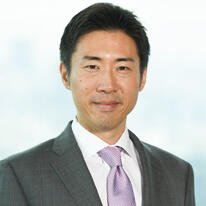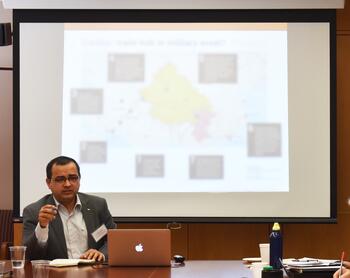Bridging “Social Distancing” Across the Pacific: 6 Tips for Facilitating Cross-Cultural Online Learning
The following is Part 1 of a two-article series on facilitating cross-cultural online learning.
COVID-19 has now extended into most communities around the world, and we are only just beginning to understand the depth and breadth of its impact. Here at SPICE, our hearts and minds are especially focused on the effects that this global pandemic is having upon students. School closures and remote learning are becoming the norm as people are being asked—and in many cases, required—to maintain “social distancing” in order to prevent an even more rapid spread of the disease.
Every day there are more resources becoming available for teaching and learning online in the COVID-19 era. Many educators are struggling with how to adapt their teaching to the digital environment, while also striving to take full advantage of their new online context. We would like to share a few tips that we have learned from our own experiences with leveraging online teaching to forge international student connections, in hopes of encouraging others to develop similar cross-cultural online experiences for students on a global scale.
First, let me describe our own context for teaching online at SPICE. SPICE has been engaging high school students in the United States in online learning since 2004, when our first cohort of the Reischauer Scholars Program (RSP) began its intensive study of Japan and U.S.–Japan relations. When we launched a counterpart to the RSP in 2015—the Stanford e-Japan Program, an online course on U.S. society and culture and U.S.–Japan relations taught to high school students in Japan—we began to explore ways in which these two cohorts of students could come together and learn directly from and with one another. Just as the RSP students are spread across the United States, the Stanford e-Japan students are distributed across the islands of Japan. The diversity of perspectives, backgrounds, and experiences that these students bring to their cohorts is one of the richest and most valued aspects of SPICE’s online teaching initiatives.
We wanted to give our RSP and Stanford e-Japan students an opportunity to come together and discuss their shared experiences, concerns, and anxieties within the contexts of their new realities. How is the COVID-19 pandemic impacting daily life in their respective societies and communities? What are the local and national government responses to this crisis? How are their schools managing the closures, and how is it impacting their future education plans and prospects? These were among the many topics discussed by students across the Pacific at a recent virtual event.
On Friday, March 20 at 7:00pm PDT (which was 11:00am on Saturday, March 21 in Japan), 45 students from across Japan and the United States came together in a Zoom virtual classroom (VC) session to meet, chat, share, learn, and listen. Below are a few best practices that we implemented in this recent session, and that we hope will be helpful for others when considering pedagogical strategies for engaging students in international and cross-cultural online discussions.
1. Prepare students in advance
To make for a rich and productive session, it is crucial that students come to the session well prepared and ready to engage actively. Prior to the session, all students were sent an agenda and asked to prepare at least two questions for small-group discussion. We also asked for student volunteers from each course to serve as small-group discussion leaders; half from RSP, half from Stanford e-Japan. Simple guidelines for moderating the discussion were sent to the discussion leaders in advance, including the following:
- Begin by identifying yourself as the small-group discussion leader.
- Facilitate self-introductions.
- Be mindful of encouraging all students to participate and voice their opinions and perspectives.
- Remind everyone of the agenda and the time allotted for small-group discussion.
2. Set basic ground rules for discussion
For online discussions in general—and especially for discussions in a cross-cultural setting—it is important for students to know what to expect and understand what is expected of them. In our case, because communication styles and norms—particularly in group settings—tend to be quite different in Japan and the United States, we have found it helpful to address these differences up-front to alleviate potential cross-cultural misunderstandings. Following brief introductions by the RSP and Stanford e-Japan course instructors, we began the session by taking a few minutes to highlight key differences in cross-cultural communication styles. For example, students in the United States tend to be less comfortable and/or familiar with silence or pauses in conversation, while students in Japan are often used to allowing for more time and space to think before speaking up.
3. Divide students into small groups
While student discussions can certainly be facilitated in one large group, we highly recommend dividing students into smaller groups if your software allows. (In Zoom, use the “Breakout Rooms” feature to do this.) In our experience, small groups create an environment that fosters dialogue that is more student-centered, dynamic, and inclusive—and therefore more meaningful to students. We have found that group sizes of five to eight work well. With 45 students in attendance at our recent session, we decided to divide students into six small breakout rooms in Zoom, each with a mix of students from the United States and Japan. All groups held their discussions in English, with the exception of one bilingual group comprised of American students fluent in Japanese and Japanese students fluent in English. With about seven or eight students in each group, each student had ample opportunity to actively engage in discussion and share his or her perspectives and experiences with one another. Each group was preassigned a topic/theme for discussion: COVID-19 (two groups), U.S.–Japan politics and economy, Japanese pop culture, Japanese language, and education.
4. Assign roles
In addition to the discussion leader role, students were also asked to assign a notetaker/reporter in each small group. For groups with an RSP student leader, a Stanford e-Japan student was asked to report back to the main group at the end of the session, and vice versa for groups with a Stanford e-Japan leader.
5. Support student discussion
Once students’ discussions are underway, periodically check in on each group and provide support as needed. We use Zoom for our virtual class platform, which allows for the host to hop between the breakout rooms throughout the duration of the session. While we prefer to allow for the small-group discussions to remain student-centered and student-led, there are times when a teacher might jump into a small group and either notice that a particular student is dominating the discussion, or that there are extended silences. It would be appropriate here for a teacher to send a private message to the discussion leader with some guidance and support as needed.
6. Debrief as a class
Save time at the end of class to reconvene students as a large group and share out to each other. In our case, the notetaker/reporter for each small group presented a short summary of his or her group’s discussion and some time was allowed for comments from the whole group following each presentation. While there were five different topics assigned to the six groups, it was interesting to see that all of the groups ended up discussing the impact of the COVID-19 situation at some point during their time together. Dedicating time to this whole-group debrief enabled students to learn about different perspectives and varied comparative responses to COVID-19, and it created a valuable opportunity for students to forge a cohesive virtual community of their own.
Concerns about the COVID-19 pandemic, of course, hovered above all of us during the session and one of the big “take-aways” for the students was how interdependent and interconnected the world is. The anxieties of suddenly transitioning to online learning, being separated from friends and classmates, and not knowing how this pandemic might impact their prospects for higher education are shared by high school students everywhere. With many students transitioning to some form of remote learning, this could be an ideal time for young people to reach out across cultural and societal boundaries and deepen their international and cross-cultural awareness and understanding, and for schools to consider offering opportunities for these virtual connections to be made.
For more information about the Reischauer Scholars Program or the Stanford e-Japan Program, please visit our programs’ webpages at reischauerscholars.org and stanfordejapan.org. SPICE also offers other online courses to U.S. high school students on China (China Scholars Program) and Korea (Sejong Korea Scholars Program), and an online course to Chinese high school students on the United States (Stanford e-China Program).
To stay informed of SPICE news, join our email list and follow us on Facebook, Twitter, and Instagram.
Related articles:
- SPICE’s Stanford e-Japan Instructor Waka Takahashi Brown Honored with the Elgin Heinz Outstanding Teacher Award
- Stanford e-Japan: My Window to the Wider World
- Honoring High School Students from Japan and the United States: A Glow for Global Peace
- The RSP: A Stepping Stone in My Journey with Japan
- Yanai Tadashi Foundation and SPICE/Stanford University






 SHCPE 2019 team with Ken-ichi Nakamura, President of the Prefectural University of Hiroshima
SHCPE 2019 team with Ken-ichi Nakamura, President of the Prefectural University of Hiroshima
 Maiko Tamagawa Bacha
Maiko Tamagawa Bacha